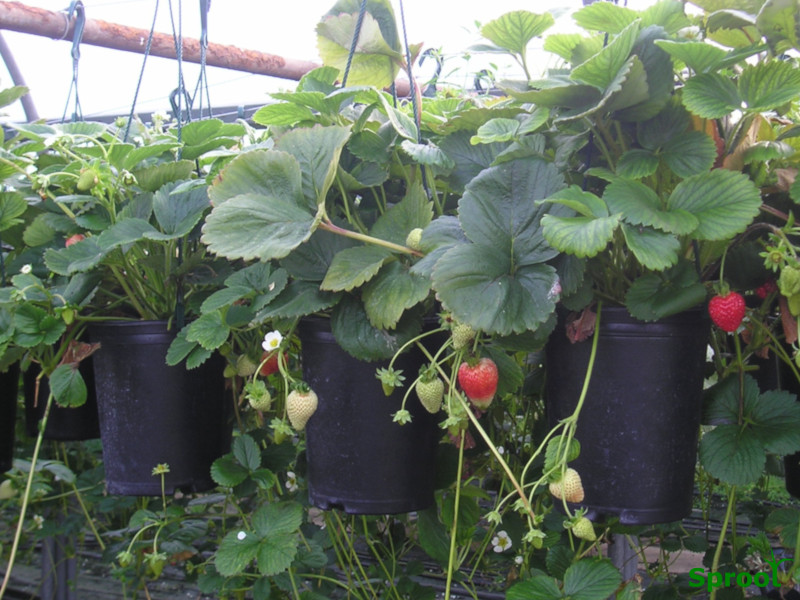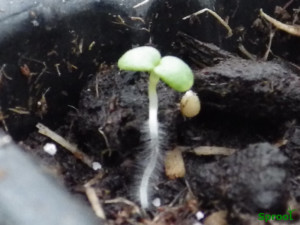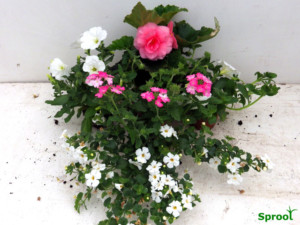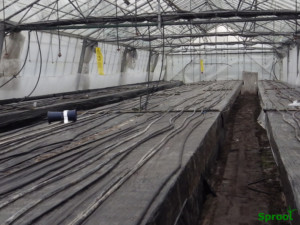Remember when Strawberries were Sweet, juicy and full of aroma.
To have perfectly ripe strawberries you need to grow your own or visit a pick your own strawberry farm.
The good news is its really easy to grow your own fresh strawberries and you don’t need a garden.
Want to learn how to grow your own click below
There are two types of strawberry’s
main-crop and perpetual
Main crop Strawberries
A range of varieties that have one main fruiting season (June), you can extend the season by choosing early, mid and late varieties. Main crop only flower once but you can make them flower earlier by using a greenhouse, some form of protection, fleece or small tunnels
Main crop varieties are all short day plants, the flowers are formed when the days are less than 12 hours. The flowers develop in the autumn or early spring
The main crop fruiting season can last about a month if you use some early, mid and late season varieties
Strawberry varieties develop the flowers at different speeds and are split into early (5-7 days ahead of mid), mid and late (10- 20 days after mid season)
When choosing a strawberry you should avoid some of the supermarket varieties they are bred for shelf life, appearance and ease of picking, then taste, some turn red before they ripen, this is why they often have a disappointing flavour.
As a gardener you don’t have to worry about transport and you can leave them to ripen on the plant, so go for taste first, then disease resistance. Good commercial PYO (pick your own) types are worth considering.
Early Season
Quick to flower, this puts them at risk of frost, so be prepared to protect them if needed, a bit of fleece is usually enough. they can also be forced in a greenhouse or the house to flower very early.
Christine
Christine some 5 days ahead of Mid season and responds particularly well when covered with fleece
Flavour is excellent with good levels of sugar and is the only early variety that is resistant to Verticillium Wilt. It also has good resistance to Mildew and seems to avoid by Two Spotted Spider Mite.
Honeoye
Honeoye crops 4-6 days ahead of Mid season
The berries have a tendency to darken as they ripen. It is susceptible to Verticillium Wilt and needs frequent picking to produce the best results.
Korona
Good PYO choice as a result of its combination of flavour, season and disease resistance.
It is 5 days ahead of Mid season and resistance to Verticillium Wilt and other root diseases make it an easy variety to grow successfully.
Malling™ Centenary
A common supermarker variety Malling™ Centenary has already established itself as the early replacement for elsanta, with a combination of superb fruit quality, excellent flavour, big fruit and shelf life
Marshmello
An East Malling Research bred early variety producing strong, vigorous, large crowned plants with excellent disease resistance. The large fruit with superb flavour is too soft for supermarkets but perfect for PYO and the amateur market.
Rendezvous
An East Malling Research bred early variety producing strong, vigorous, large crowned plants with excellent disease resistance.
Royal Sovereign
Bred by Thomas Laxton of Tinwell nr Stamford in the 1890’s, this is one of the oldest fruit varieties still cultivated. This variety has always had a reputation for fruit quality and was the most widely grown variety from 1920 until 1960. Its reputation has survived amongst knowledgeable gardeners and it maintains a a substantial and enthusiastic following.
Sweetheart
Cropping just before the mid season, Sweetheart has attractive berries which are uniformly conic, with good skin strength, flavour reasonable (bred for super markets)
It has a compact but vigorous habit, with a dense canopy but with well displayed fruit and has reasonable resistance to Powdery Mildew, but is susceptible to Crown Rot and appears to be tolerant to Verticillium Wilt.
Vibrant
Bred and selected by East Malling Research, Vibrant is a high yielding, high quality early variety with excellent flavour, that has rapidly become established as the premier early selection and has advanced the supermarket strawberry season by ten days.
A genuinely early variety, the plants are moderately vigorous with good resistance to Powdery Mildew and Crown Rot but are susceptible to Verticillium Wilt.
Mid Season
In the old days you could only have British Strawberry’s once a year during late June to early July (Wimbledon season) this is the main season. They normally flower late enough to miss most spring frosts and bear fruit during the warmer drier summer, so less chance of the fruit rotting.
Cambridge Favourite
Bred in 1938 and nursed through the war as a numbered seeding, Cambridge Favourite became the most widely grown variety in the 1960’s.
Excellent disease resistance and a vigorous free runnering habit makes this an easily grown variety that crops heavily and reliably under a wide range of conditions.
The medium sized fruit hangs well on the plant but is too soft to stand much travelling but valued by the PYO customer.
Elegance
Bred and selected at East Malling Research, Elegance is the most exciting main season variety to be released by that programme. Elegance was named after its elegant, bright and glossy berries which are orange-red in colour and uniformly conic. The berries are firm and hold on the plant for several days with no darkening in colour (bred for supermarkets)
Best classed as a mid-late season variety. Picking commences approximately five days later than Sonata and extends over a long period, typically four to five weeks. Elegance is susceptible to Mildew on the foliage and has some tolerance to Verticillium Wilt and Crown Rot.
Elsanta
Elsanta is familiar to all supermarket shoppers it is still the UK’s most important variety thirty-one years after its initial release by the Dutch breeders. Superb fruit quality and excellent shelf life make this the supermarket’s favorite. Susceptibility to Two Spotted Mite and poor disease resistance, particularly to Verticillium Wilt and other soil-borne diseases make it a poor choice for amateurs.
Eros
Large, attractive conical berries, good flavour and a bright, glossy finish are typical of this variety. It is resistant to Red Core and has some tolerance to Verticillium Wilt. A useful main season PYO variety
Hapil
Hapil is a large, vigorous plant producing a heavy crop of very large, bright, glossy mid-season fruit. The easily picked fruit, its size, flavour and appearance all give great appeal to the PYO customer. Susceptible to Verticillium Wilt
Lucy
This East Malling Research release has been outstanding when tested, it suits unprotected growing, with a pick date 5 to 7 days later than Elsanta, with very large, attractive, firm, berries. The berries are unaffected by heavy rain. Lucy has a useful level of resistance to Crown Rot but is moderately susceptible to Verticillium Wilt and Mildew
Pegasus
Bred by East Malling Research. Fruit appearance, shape and skin finish are good and the variety crops some 5-10 days later later than elsanta.
It has good all round disease resistance and is tolerant of Verticillium Wilt. Recommended as a reliable, general purpose variety for the PYO industry.
Red Gauntlet
A main season, high yielding variety that produces a second crop of fruit in September. Classed as a ‘heritage’ variety and is red core resistant.
Sonata
Sonata is an Elsanta – Polka cross that has rapidly become the second most widely planted supermarket variety, it has better flavour and texture compared to Elsanta. It crops five days later than Elsanta and has good resistance to Powdery Mildew but is susceptible to Verticillium Wilt, Rhizoctonia and Crown Rot.
Late Season
Varieties that will always flower later than main crop and are good to extend the season.
Cupid
From East Malling Research it has resistance to four major diseases, namely Verticillium Wilt, Crown Rot, Black Spot and Powdery Mildew. It crops at the same time as Florence and produces a high yield of attractive, uniform, conic berries with good skin strength and shelf life.
Fenella
From East Malling Research a Lucy cross, Fenella is a late season selection with excellent disease and weather resistance, large berries with a sweet flavour and are mildly aromatic with a pleasant juicy texture, it is a vigorous plant with a compact, upright habit and long trusses, displaying the fruit well. With a very good resistance to Verticillium Wilt and to Crown Rot and the ability to stand rain.
Florence
Very popular in europe it has Exceptional yield, superb disease resistance and large attractive berries with a good flavour, it is 12 days later than elsanta. Resistant to Crown Rot and most leaf diseases including Powdery Mildew and has good tolerance to Vine Weevil and Verticillium Wilt.
Judibell
Bred at East Malling Research it is the first to include “extended dormancy”, remaining dormant until mid-May. So it can fruit up to 20 days later than Florence and produces large, conic-shaped berries with a good mid-red colour and reasonable flavour. Resistant to both Verticillium Wilt and to Crown Rot but it has some susceptibility to Powdery Mildew,
stands up well to wet weather.
Malwina
A specialist late season, cropping 10 days later than Florence, superbly flavoured PYO variety, it produces glossy, dark red, firm berries that have a lovely aroma, exceptionally high Brix readings and a really excellent flavour. The berries will stand some rain, it is resistant to Mildew, tolerant to Verticillium Wilt, Crown Rot and Red Core and shows only a limited susceptibility to Botrytis.
Malling™ Allure
An exciting new variety to compliment the highly successful Malling™ Centenary by matching its fruit quality but with a 14 day later season. The berries are firm, with high Brix levels and excellent flavour, an upright habit with some resistance to Mildew but moderately susceptible to Crown Rot and Verticillium Wilt.
Symphony
Bred at The James Hutton Institute is a well established late season variety it is 8 to 10 days later than Elsanta. The berries are bright, regular and glossy with good flesh and skin firmness and a pleasant, slightly acidic flavour. Good resistance to Red Core and some tolerance to Vine Weevil and a popular PYO variety.
Everbearer or Perpetual
These flower all the time producing a steady supply of fruit but not in large quantities however over the whole season about the same as the main-crop.
They have two main flowering times May and August, so they flower earlier than main crop the first fruit can be as early as late May early June and they will fruit well into the autumn, with a bit of protection.
The easiest strawberry to grow for beginners are the perpetual types, they flower all the time, an early frost is not disastrous as more flowers will appear later
Everbearers are not sensitive to day length so will throw flowers all year round.
Finesse
Bred at East Malling Research it combines high yield with excellent fruit quality, superb flavour and robust disease resistance, the flavour is well balanced between acid and sugar and brix levels have averaged 9.5 in trials, good resistance to Verticillium Wilt and to Crown Rot.
Flamenco
Bred by East Malling Research, it has good flavour with good resistance to Verticillium Wilt. Fruiting commences in July and peak production occurs in September.
Malling™ Champion
The latest everbearer to be released from East Malling, Malling™ Champion is a high yielding, large fruited and is resistant to Crown Rot and Verticillium Wilt and has moderate resistance to Powdery Mildew.
Ostara
A popular, older everbearing selection cropping from July though until early November. This easy to grow variety produces a large strong plant with plenty of flowers.
The berries are an attractive bright red, firm and juicy with a lovely fresh flavour. Yields are good and Ostara is recommended for PYO and amateur use.
Specialist
Snow White
Snow White is a vigorous selection, much higher yielding than existing white fruited varieties, producing attractive, medium sized, uniform and conical berries. It is June-bearing and ripens mid-season. It is winter hardy and has excellent disease resistance/tolerance. The flavour is characteristic of white fruited strawberries being very aromatic with a unique fresh fruit flavour reminiscent of pineapple.
Disease resistance
Worth considering when choosing varieties, most root problems can be avoided by growing strawberries in containers, Mildew is more of a problem when you grow strawberries inside or undercover. Make sure you buy certified stock it will have been checked and tested before it is lifted and sold.
Mildew
This is a hot summer problem and common when growing undercover.
Powdery mildew thrives under hot dry conditions and is likely to be a problem in the late summer.
Red core
Red core is a serious disease of strawberries. The fungus lives in the soil and attacks the roots of strawberry plants causing them to rot, not a problem in container plants.
Crown rot
Some modern varieties, Elsanta are particularly prone to crown rot. Symptoms of this disease are seen when the youngest leaves wilt and often turn bluish-green. This wilt spreads quickly to the entire plant which collapses normally within a few days. the plant often breaks at the crown, If cut open length ways, browning of the crown tissue will be seen.
Botrytis
Botrytis or grey mould is a widespread and damaging disease of strawberries. It causes rotting of the green and ripening fruits, quickly reducing them to a soft mass covered with grey dusty spores of fungus, few varieties are resistant to botrytis.
Rhizoctonia
Often called black root rot, not fully understood but a collection of soil borne root rots than can cause damage, not a problem in container plants.
Verticillium Wilt
A soil borne disease that survives in the soil to infect plants eventually killing them, not a problem in containers.





